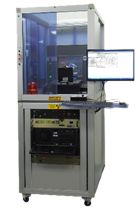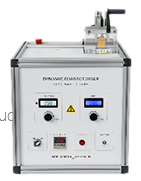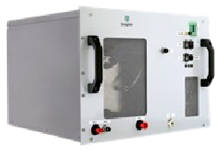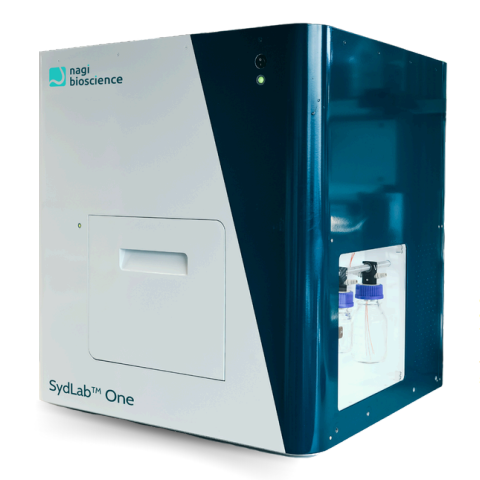上海埃飞科技
Worldwide Technology(S. H)上海埃飞科技
Worldwide Technology(S. H)产品展示




Model Organism Automated, High-content Screening Platform

SydLab is a state-of-the-art benchtop automation platform engineered for high-content screening and mid-to-large-scale biological testing using Caenorhabditis elegans (C. elegans). SydLab integrates advanced and automated microfluidics handling and high-
1. High-Throughput Automation: The platform enables efficient automated screening of C. elegans model organisms, significantly improving laboratory work efficiency.
2. Precise Data Collection and Analysis: With high-precision data collection and analysis technologies, the platform provides accurate and reproducible data, offering strong support for research.
3. High Flexibility and Customizability: The platform supports various experimental configurations, suitable for different experimental needs, and can be customized according to specific research goals.
4. Cost Savings: The automation reduces manual intervention, minimizes human error, and lowers experimental costs.
System offers two types of microfluidic chips (L1 and L4) that cater to different experimental requirements based on the developmental stage of C. elegans. Each chip is designed to optimize the automated handling, imaging, and analysis of specific C. elegans stages, with unique features that make them suitable for different types of studies. The chambers in the microfluidic chips are interconnected by filters that regulate the movements of C. elegans along the same channel. During the C. elegans loading process, the system applies pressure to open the filters, allowing C. elegans to move between chambers and be distributed across the chambers and along the channel. These filters are engineered with precise dimensions that act as size-based barriers; once the C. elegans are loaded, the filters return to their default state, which is sized to retain C. elegans of a specific developmental stage within the chambers. This design ensures that, throughout the experiment, C. elegans remain confined to their designated chambers, providing a controlled environment for consistent imaging and analysis while preventing the escape or migration of C. elegans between chambers.
1. C. elegans Model Organism Compatibility: The platform is specially optimized for compatibility with C. elegans model organisms, making it suitable for various screening experiments.
2. High-Content Imaging: Utilizing advanced imaging technology, it supports high-resolution and high-content screening analysis, providing more detailed biological data.
3. Integrated Design: The device integrates automated liquid handling, imaging analysis, and data management, making it user-friendly and easy to operate.
4. Multi-Parameter Simultaneous Monitoring: It allows for the simultaneous monitoring of multiple biological parameters, providing comprehensive experimental support for drug screening, gene function analysis, etc.
1. Drug Screening: The platform is highly efficient for large-scale drug screening, particularly for high-throughput screening experiments.
2. Gene Function Research: It is suitable for studying the function of genes in C. elegans, helping researchers explore the roles of genes in various biological processes.
3. Toxicology Research: It aids in screening potential toxic substances and evaluating the effects of various compounds on living organisms.
4. Aging and Disease Research: The platform also has potential for research in aging and neurodegenerative diseases, offering powerful tools for related fields.
Specification
Imaging System
The imaging system incorporates a microscope with automated focusing and an integrated CMOS camera. It supports both brightfield and fluorescence imaging, with configurations suitable for time-lapse studies and high-content screening. The 10x objective (6x effective magnification) with a numerical aperture of 0.5 provides a balance between resolution and size/depth of field. The camera resolution is 2048 x 2048 pixels, and the image has a final pixel size of 0.9075 μm. The microscope is also optimized for detecting green light (for example GFP), using an epifluorescence illumination scheme with excitation wavelength of 469 nm and emission collection at 525 nm.
Temperature Control
The SydLab™ One includes an integrated incubator that maintains a controlled temperature environment for the C. elegans, ranging from 17°C to 37°C (±0.2°C). This temperature range supports various experimental needs, from standard worm cultivation to stress response studies (heat-shock); in fact, the system can increase the temperature by 5°C in approximately 30 minutes and decrease it by the same amount in about 60 minutes.
Power Requirements: 100-240V ±10%, 50/60Hz
Consumption: Varies between 250W and 350W depending on the model
Designed for laboratory environments: 0.67m x 0.61m x 0.71m, 100kg
Ambient temperature: 15-26°C
Humidity: Below 70%
Includes a main power connection and USB 3.0 Type-A port for data transfer
Both connections must meet the system's specified requirements for proper operation
因用于机器人各方面应用且与大多数机器人类型兼容,AutoCal系统可以检测出机器人自身构造和工具中心点(TCP)的 突然改变或偏离,并且该系统无需人为干涉就自动地更正这些误差。
AutoCal系统-Dynalog的先进水平校准技术,Dynalog是机器人单元标定技术的世界领导者。它的主流产品DynaCal 系统,被应用于离线的机器人单元校准,并作为最精确的和技术先进的机器人校准程序为许多机器人制造商和终端使用者所接受。AutoCal 系统将已证实的DynaCal校准技术结合到一个在线的全自动系统中,该系统专为程序控制和复原而设计的,价格低廉。
AutoCal系统提供在线的机器人校准方案,旨在快速和自动地保证机械设备的工作性能。因用于机器人各方面应用且与大多数机器人类型兼容,AutoCal系统可以检测出机器人自身构造和工具中心点(TCP)的 突然改变或偏离,并且该系统无需人为干涉就自动地更正这些误差。这意味着不用猜测哪里会出错,不用浪费宝贵时间在机器人程序重复校准上,产品品质无任何损失。
AutoCal系统-Dynalog的先进水平校准技术,Dynalog是机器人单元标定技术的世界领导者。它的主流产品DynaCal 系统,被应用于离线的机器人单元校准,并作为最精确的和技术先进的机器人校准程序为许多机器人制造商和终端使用者所接受。AutoCal 系统将已证实的DynaCal校准技术结合到一个在线的全自动系统中,该系统专为程序控制和复原而设计的,价格低廉。